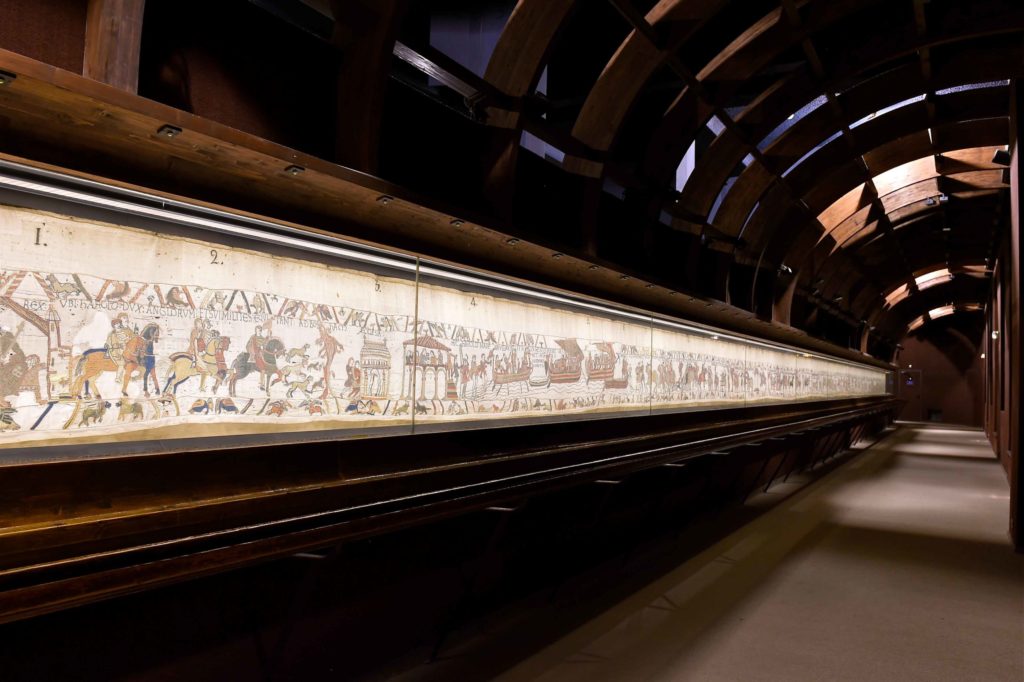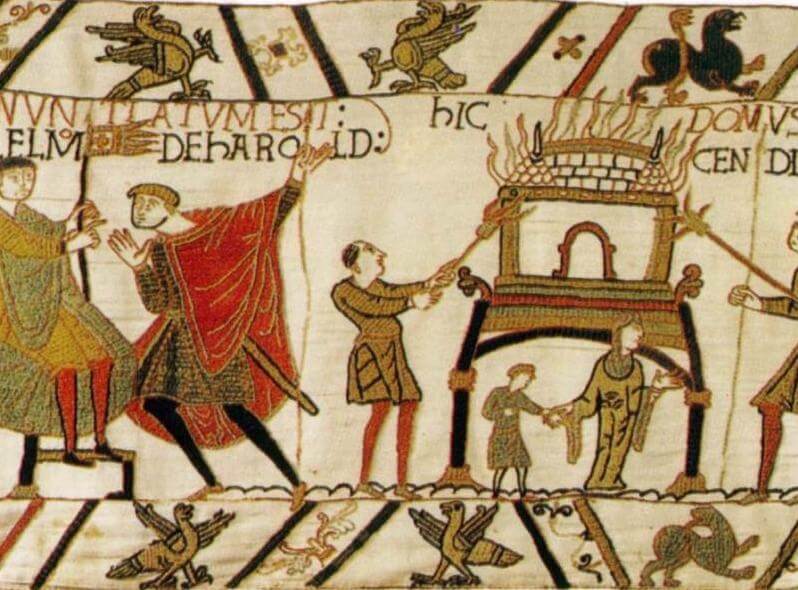
The Bayeux tapestry is a embroided cloth that is nearly 70 metres long and 50 centimetres tall, which portrays more than 70 scenes of the events leading up to the Norman conquest of England in 1066 by the Duke of Normandy. It tells the story from the point of view of the conquering Normans but is now agreed to have been made in England. The story begins with a introduction to Harold’s visit to Bosham on his way to Normandy in around 1064 and ends with the flight of Harold’s English forces from Hastings in around 1066, however the story should have been taken further and should end with the Anglo-Saxons fleeing at the end of the Battle of Hastings in October 1066 but the end of the tapestry strip is missing.. Along the top and the bottom of the tapestry runs decorative borders with figures of animals, scenes from the fables of Aesop and Phaedrus and some scenes related to the main pictorial narrative.
The tapestry is made up of 13 chapters each containing a various amounts of scenes within the chapter. Each chapter tells a different part of the story, developing the story in each chapter and scene.

When first referred to in 1476, the tapestry was used once a year to decorate the nave of the cathedral in Bayeux, France. This made the tapestry be discovered by by the French antiquarian and scholar Bernard de Montfaucon who then went on to produce the first reproduction of the Bayeux tapestry in 1730.Bernard de Montfaucons reproduction of the tapestry was exhibited in Paris at Napoleon’s wish in 1803–04.
The tapestry is of greater than a work of art, it is also important evidence for the history of the Norman Conquest, especially for its evidence of Harold’s relation to William before 1066.

In the 19th century a group of Victorian embroiderers take on the project of recreating the Tapestry in its entirety, where they reproduced every single detail stitch-by-stitch so that the Tapestry’s story could be enjoyed by people in England.
https://www.britannica.com/topic/Bayeux-Tapestry

Cerys, there are still a lot of work missing from the blog – must complete by Fri 19 Nov
1. Experiment 1: Embroidery & Narrative
2. Experiment 2: Animation using After Effects
3. Recording: photo shoots for film with selection + analysis
4. Final image + evaluation
5. Editing: Image & sound with screen prints from Premier
6. Final film + evaluation
7. Statement for 2 Lives exhibition